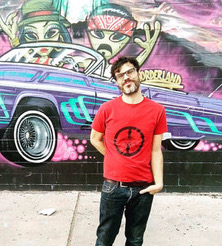My journey to acupuncture began 20 years ago, as an undergrad studying Theology. I took this class on solitude and social change, and about this monk named Thomas Merton. Back in the 1960’s he was this hermit who was also an activist who taught nuns and priests about the practice of Zen and meditation and he worked to bridge this divide between the east and the west. And he believed that silence and stillness are radical acts that can change the world.
And in one of his journal entries I read, he wrote: “Under the surface of glitter & trash in the midst of all the mess of traffic…there are the people: sick & distraught, drunk, mad, melancholy, anguished or simply bored to extinction. It is the people I love and not the roles in the city, not the glitter of business and of progress. Can’t we give them something more than air conditioning?”
And this notion challenged me to my core. Can’t we give the people something more than any material thing? More than food? More than shelter? More than a hand out, more than just our spare change. More than a pat on the back and a… “I’m sorry; I can’t help you.”
And these questions led me eventually to Ciudad Juarez, Mexico, to the borderlands, in a project where these needles bring refugees and migrants and people affected by violence together. Believe me: It’s certainly not the air conditioning that brings us together. Because there is no air conditioning at our school in in the when it’s 114 degrees teaching acupuncture in the far corners of Juarez. There's nothing at all fancy or shiny or waterfall-ey about it.
It’s simple: People gather in circles. Sit in silence. Needles dangling from their ears. And out of this ordinary people create safe space in a precarious place.
Witnessing this needle induced silence and stillness sprawl out into the urban slums, I have seen the birth of a new, and authentically community supported healthcare model. A model that has forges a powerful solidarity, a model that calls me into activism.

